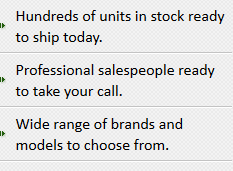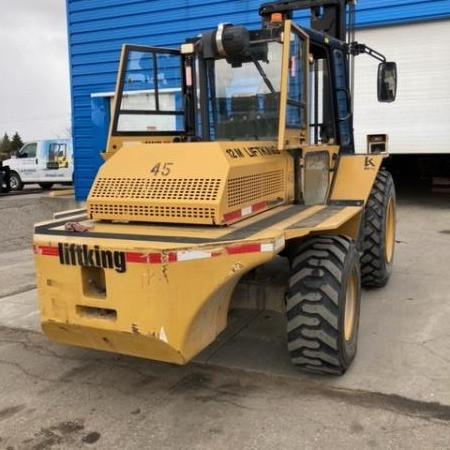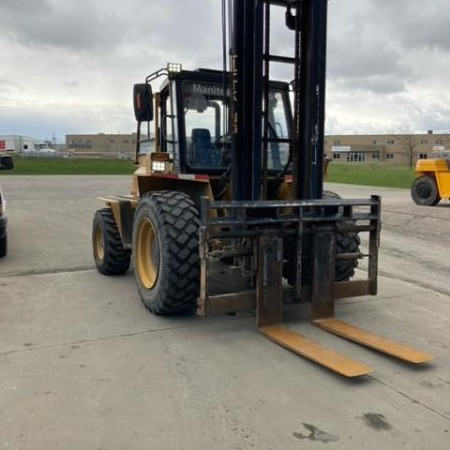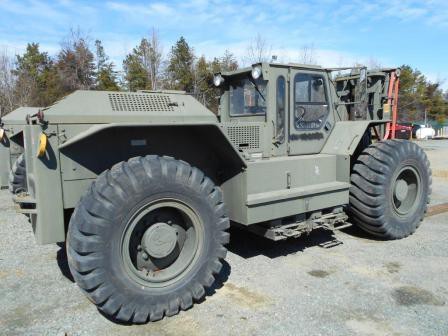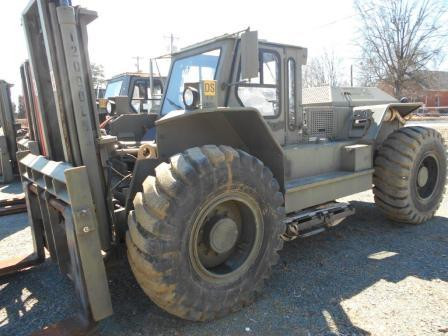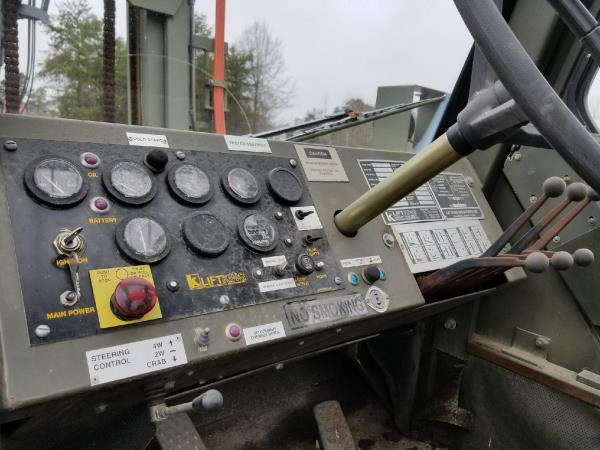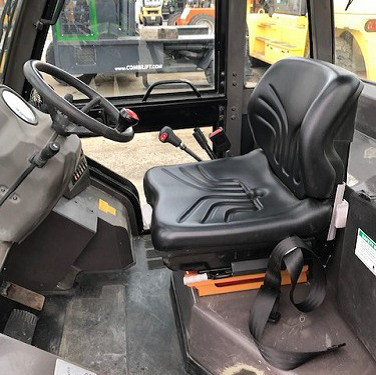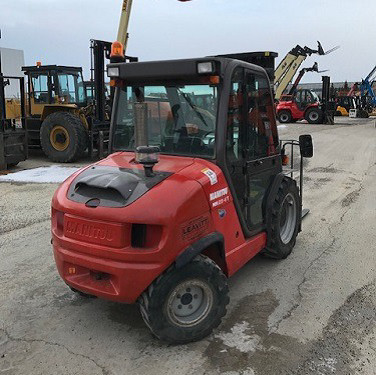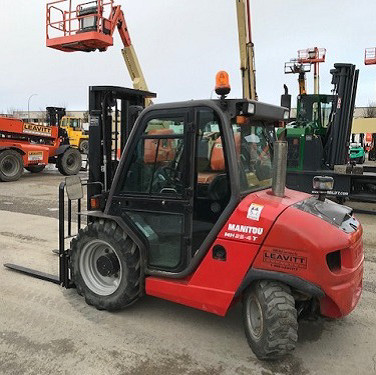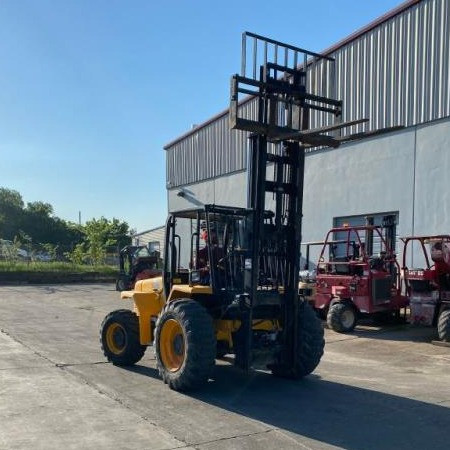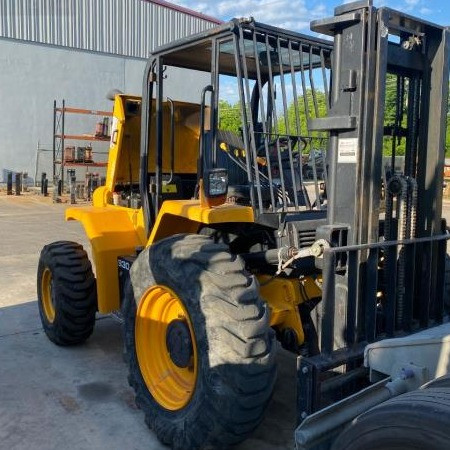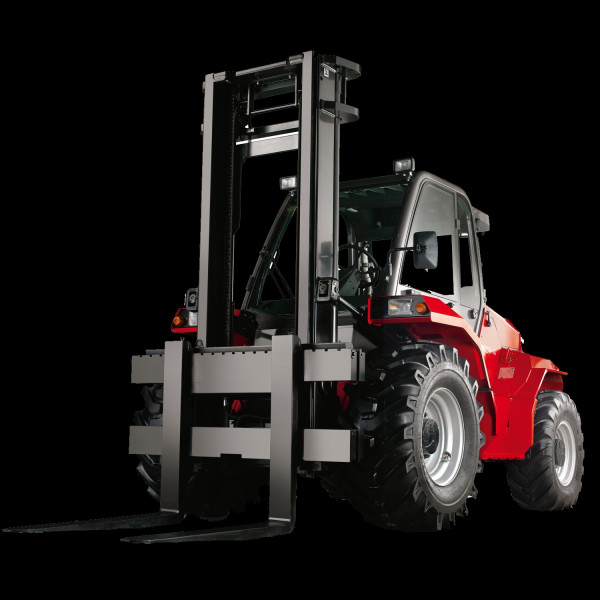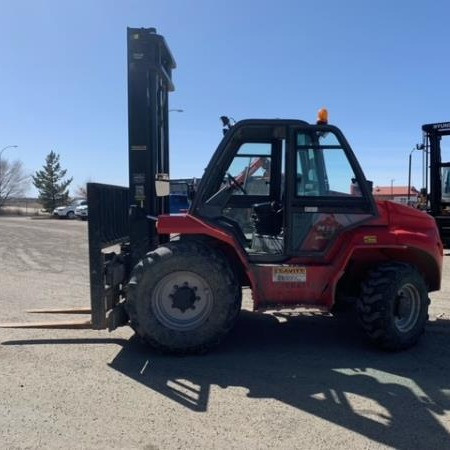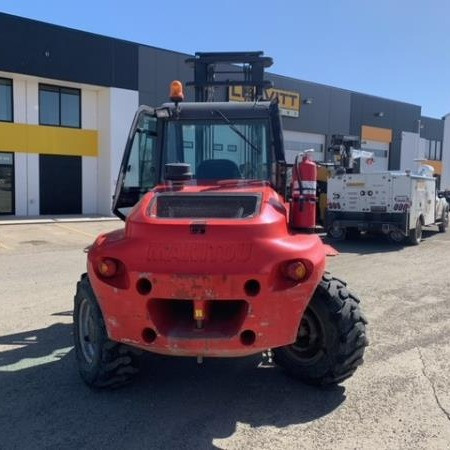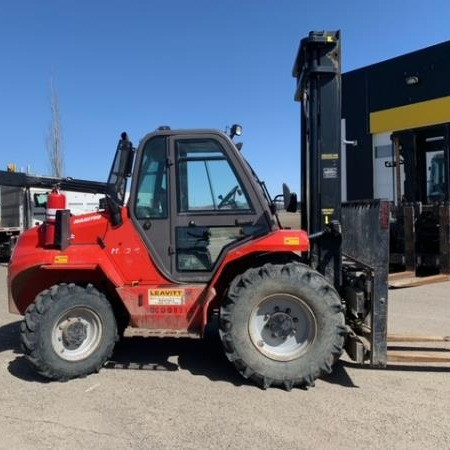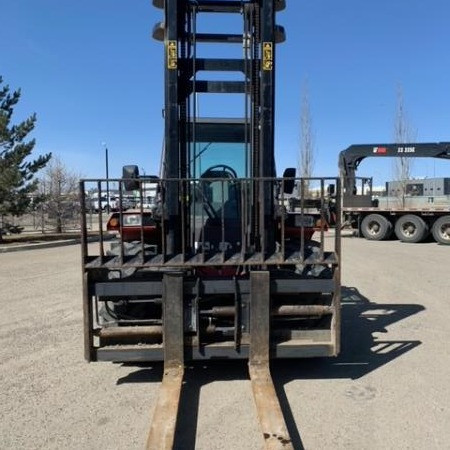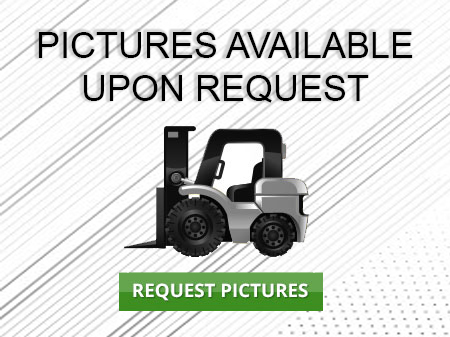Rough Terrain Forklift Norwalk
Used Rough Terrain Forklift Norwalk - Forklift trucks utilize two forks to transport pallets and load and unload cargo. Forklifts fall into two main categories, industrial forklifts and rough terrain forklifts.
The first category of forklifts, industrial forklifts, are mostly used in warehouses and at loading docks on surfaces that are relatively smooth and level. By contrast, the second category of forklifts, rough terrain forklifts, are commonly used to run on uneven and rocky surfaces. Rough terrain forklifts are often seen at construction sites and outdoors. They have the weight capacity, size and tires to handle heavy loads. The main difference between industrial and rough terrain forklifts is that industrial forklifts are fitted with cushion tires, a common, over-the-road type tire. Rough terrain forklifts, on the other hand, are fitted with pneumatic tires, a type of tractor tire allowing for better traction and flotation properties. Industrial forklifts are commonly powered by internal combustion engines although a fuel cell or battery electrical source may be used. Internal combustion engines are mainly used by rough terrain units.
Types of Class 7 Rough Terrain Forklift Trucks
The three types of Class 7 Rough Terrain Forklift Trucks include the rotating telehandler forklifts, telehandler forklifts and straight mast forklifts.
Every rough terrain forklift truck is designed to operate on disturbed ground and difficult locations commonly found in military and construction atmospheres. A rough terrain forklift also offers increased maneuverability and performance. In the case of rough terrain forklift operations, extra consideration must be given while raising loads in these rough, variable conditions to prevent tip-over. For safety reasons, it is vital the forklift maintains stability before moving, lifting or lowering. Rough terrain forklift operators must practice correct lifting techniques to remain stable on the ground.
Straight Mast Forklifts
The straight mast forklift design enables easy transport around rough terrain locations including construction and demolition sites. These forklift trucks provide increased maneuverability and accessibility because it is fitted with big, heavy-duty pneumatic cushion tires. Pneumatic tires allow the machine to successfully traverse difficult terrain. Most straight mast forklift units have 2WD or 4WD configurations. Even though these machines are better utilized in exterior locations, many straight mast forklifts operate with propane or diesel, enabling them to be used indoors for short timeframes. Straight mast forklifts have a similar lift capacity compared to standard forklift models; ranging from 5K to 36K lbs.
Telehandler or Telescopic Handler Forklifts
Telehandler or telescopic handler forklift trucks are equipped with a telescoping boom, giving them their name. This telescoping boom allows the forklift truck to pick up and place loads at various distances and lift heights in front of the machine. The reachability of the forklift provides the operator with greater flexibility when placing a load.
Featuring two wheels found at the front and two wheels at the rear, the standard telehandler is a long and low machine. Mounted at the back of the forklift, the telescopic boom is on a pivot that is located many feet above the forklift frame. The left side of the machine houses the cab and the hydraulic fluid tank and the fuel tank are found opposite to the cab. The forklift engine and transmission are situated along the center of the machine. This popular design showcases a balanced forklift which is ideal for the machine’s stability with lifting, moving and lowering items.
Telehandler units offer significantly higher lifting heights compared to standard units. Also called compact telehandlers or high-reach telehandlers, these forklift trucks can lift their full load capacities from 18 feet, for the compact telehandlers, to 56 feet, for the high-reach telehandlers, into the air. Load capacities are between 5K to 12K pounds.
All-terrain forklifts often include all-wheel steering which allows for greater maneuverability. The power-shift transmission and steering features allow the operator to move the forklift into a safe and successful working proximity.
More recently, Telehandler forklift models have included additional features that incorporate the latest in ergonomics. Spacious cabs and tilted steering are some of the items redesigned for the ultimate comfort and productive features. These ergonomic upgrades have been shown to lessen repetitive stress injuries and lessen operator fatigue.
Most telehandler forklifts rely on a single joystick. The joystick is essential for controlling the boom functions and the hydraulics responsible for forward operation.
Telehandler forklifts can also be equipped with non-marking tires which allow them to be used in other applications such as the installation of signs and billboards as well as maintenance on buildings and stadiums.
Rotating Telehandler or Roto Telescopic Handler Forklifts
Rotating telehandler or roto telescopic handler forklifts have many features in common with the standard telehandler forklift. Telehandlers are capable of rotating heavy-lift weights to tremendous heights. However, these forklifts have the added ability to rotate the forklift on a turntable. The rotating function allows the forklift to swivel a full 360 degrees around, enabling access a much larger work area without having to reposition the forklift.
Because of this additional feature, rotating telehandlers often have a second joystick to allow operation of the rotation function apart from the lift function. Power-assist steering minimized slip differential on the rear axle for additional traction and four-wheel drive are some of the extra features offered on rotating telehandlers and standard telehandler models.
Of course, a machine that can rotate has extra safety considerations to understand. Stabilizers are a rough terrain forklift feature that rotating telehandler models rely on to increase safety while handling rotating loads that are swinging back and forth from each side of the machine. Certain rotating telehandlers operate without stabilizers; minimizing the time it takes to reposition the machine and move to other workplace locations.
Rotator telehandler units are typically smaller than standard telehandlers with their fixed-cab design. Therefore, rotator telehandler units can access smaller loads when compared to standard telehandler units. Load capacities for rotating telehandlers usually range between 4,000 and 10,000 pounds, with lift heights ranging from 15 to 80 feet.
Standard and rotator telehandlers can double as a crane when outfitted with specific winch accessories. These units can enable job sites that require a crane to get the job done without having to rent and transport a separate machine.
Advancements for Rough Terrain Forklifts
Many attachments are currently available for rough terrain forklifts, such as booms, winches, rotating fork carriages and articulating booms. Because of the importance of forklift attachments in their ability to adapt forklifts to many different types of specific jobs, it is expected that the creation and availability of new rough terrain forklift attachments will continue to increase.
Most of the proposed advancements will consist of included safety features within the rough terrain forklifts. The latest safety upgrades include automatic load restriction and other features. By automatically weighing a load, these systems calculate the loads’ safe reach distance while taking the boom angle and its’ extension into account. An alarm sounds once the safe distance is reached, warning the operator to make load weight, reach distance or boom angle adjustments.
Rough Terrain Forklift PDF
Stock Number: 209058 GL
Make: LIFTKING
Model: LK12M42
Year: 2015
| Stock Number |
209058 GL |
| Make |
LIFTKING |
| Model |
LK12M42 |
| Year |
2015 |
| Category |
Rough Terrain Forklift |
Stock Number: 267846 GL
Make: Liftking
Model: LK12000
Year: 2003
| Stock Number |
267846 GL |
| Make |
Liftking |
| Model |
LK12000 |
| Year |
2003 |
| Category |
Rough Terrain Forklift |
Stock Number: DP-MAN008 GL
Make: MANITOU
Model: MH25-4T
Year: 2016
| Stock Number |
DP-MAN008 GL |
| Make |
MANITOU |
| Model |
MH25-4T |
| Year |
2016 |
| Category |
Rough Terrain Forklift |
Stock Number: LS15257 GL
Make: JCB
Model: 930
Year: 2013
| Stock Number |
LS15257 GL |
| Make |
JCB |
| Model |
930 |
| Year |
2013 |
| Category |
Rough Terrain Forklift |
Stock Number: EQC008213 GL
Make: MANITOU
Model: M50
Year: 2017
| Stock Number |
EQC008213 GL |
| Make |
MANITOU |
| Model |
M50 |
| Year |
2017 |
| Category |
Rough Terrain Forklift |
Stock Number: 208325 GL
Make: MANITOU
Model: M50.4
Year: 2015
| Stock Number |
208325 GL |
| Make |
MANITOU |
| Model |
M50.4 |
| Year |
2015 |
| Category |
Rough Terrain Forklift |
